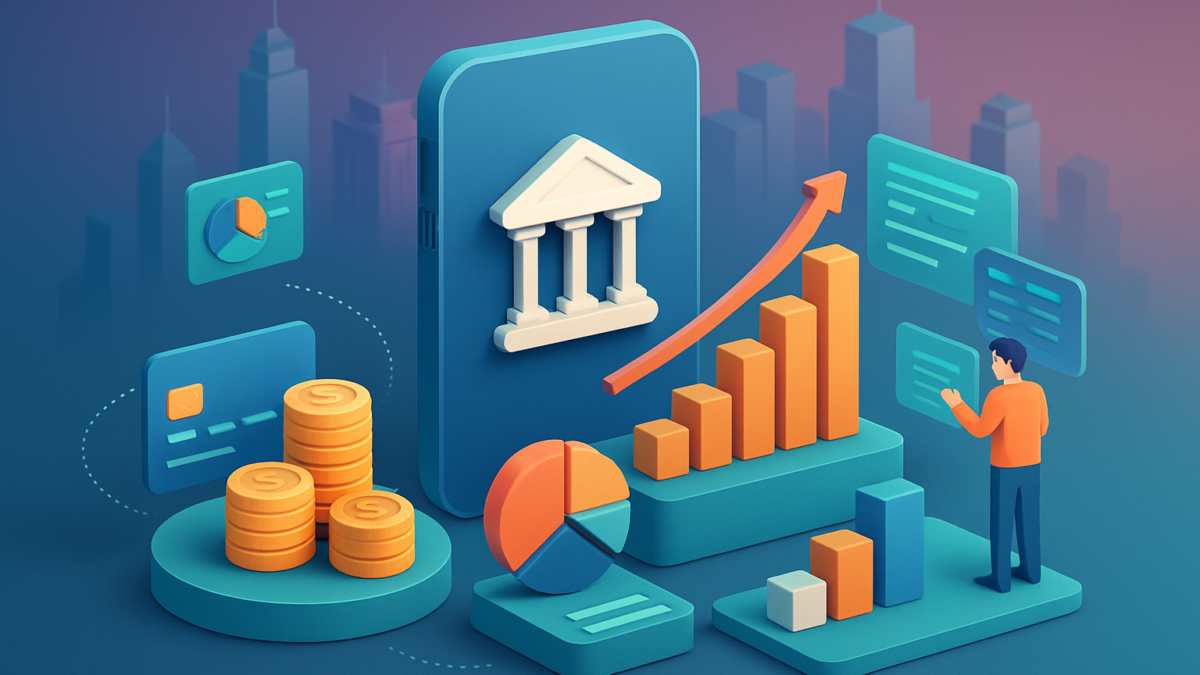The Future of Open Banking: How Data-Driven Finance Will Transform 2025
The financial industry is undergoing a data-driven revolution. Traditional banking models are being challenged by open banking, a system where banks securely share customer data with third-party providers (with consent) to create innovative financial services. By 2025, open banking is set to reshape how individuals and businesses manage money, make payments, and access credit.
This blog explores the trends, benefits, and challenges of open banking, while examining its transformative potential for the financial ecosystem.
What Is Open Banking?
Open banking is a system that allows secure sharing of financial data via APIs (Application Programming Interfaces). It enables fintech companies, payment providers, and banks to collaborate, offering personalized services, enhanced financial insights, and more competitive products.
Key principles of open banking:
- Customer Consent: Data sharing occurs only with explicit customer approval.
- Interoperability: APIs connect different financial institutions and third-party platforms.
- Innovation: Encourages competition and new financial solutions.
Why Open Banking Matters in 2025
1. Personalized Financial Services
Consumers increasingly demand tailored solutions. Open banking allows apps and banks to offer personalized spending insights, budgeting tools, and investment recommendations based on real-time financial data.
2. Faster, Smarter Payments
Open banking supports instant payments, cross-border transfers, and automated billing, reducing friction for both consumers and businesses.
3. Enhanced Credit Scoring and Lending
With access to broader financial data, lenders can create more accurate credit assessments, offering loans to previously underserved segments. This opens new opportunities for financial inclusion.
4. Data-Driven Decision Making
Businesses can leverage aggregated financial insights to make smarter decisions, manage cash flow efficiently, and optimize their operations.
Key Trends in 2025
- AI and Machine Learning Integration
AI analyzes financial data in real time to provide predictive insights, personalized recommendations, and fraud detection. - API Ecosystems
Banks are building robust API ecosystems, allowing fintechs and third-party providers to innovate faster while maintaining security. - Regulatory Support
Governments and regulatory bodies globally are mandating open banking frameworks, like PSD2 in Europe, encouraging secure data sharing. - Consumer Adoption
As trust in digital finance grows, more consumers are willing to share financial data in exchange for better services, rewards, and convenience.
Real-World Applications
- Fintech Apps: Personal finance apps use open banking to aggregate accounts, provide insights, and enable smart budgeting.
- Digital Lending: Instant credit approvals based on verified financial data improve accessibility and reduce risk.
- SME Cash Flow Management: Small businesses can connect accounting software with banking data to streamline operations.
- Payment Innovation: Contactless payments, subscriptions, and automated invoices become seamless with integrated financial data.
Challenges Ahead
Despite its promise, open banking faces hurdles:
- Security Concerns: Protecting sensitive financial data is critical to maintain trust.
- Interoperability Issues: Not all banks or providers follow the same standards, which can limit integration.
- Consumer Awareness: Educating users about consent, data sharing, and benefits is essential.
- Regulatory Variations: Different countries have different compliance requirements, which can complicate global implementation.
The Future Outlook
By 2025, open banking is expected to:
- Drive financial inclusivity by offering services to underbanked populations.
- Enable smarter investments and wealth management through predictive analytics.
- Foster collaboration between traditional banks and fintechs, creating innovative solutions.
- Support real-time financial insights, giving both consumers and businesses better control over their money.
Open banking is no longer just a trend—it’s a fundamental shift in how financial services operate, making finance more transparent, efficient, and customer-centric.
Conclusion
The future of finance is data-driven, collaborative, and personalized. Open banking empowers consumers and businesses by turning raw financial data into actionable insights. As adoption grows, it will transform the way we bank, spend, invest, and lend, creating a more inclusive and efficient financial ecosystem by 2025.
Call-to-Action
Leverage Data-Driven Insights for Growth
Want to amplify your financial research and thought leadership? With iTMunch B2B Content Syndication, your insights reach the right audience at the right time, generating qualified leads and industry authority.
See Also:From PDF to AI: The Evolution of Whitepapers in the Age of Generative Content





